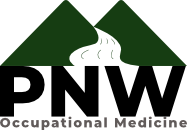Workplace injuries can be devastating for employees and costly for companies. Occupational health services play a critical role in preventing these injuries, ensuring a safer and healthier work environment. In this FAQ blog, we will explore how these services can help mitigate risks and promote well-being at work.
What are Occupational Health Services?
Occupational health services are specialized programs aimed at maintaining and improving the health and safety of employees in the workplace. These services include assessing risks, offering health assessments, providing advice on safer work practices, and supporting employees’ overall well-being. According to Uprise Health, these services are designed to protect employees from potential risks and hazards on the job, assisting with everything from injury prevention to injury care.
The ultimate goal of occupational health is to prevent workplace-related illnesses and injuries through a variety of actions. This can include pre-employment physical exams, health assessments, ergonomic evaluations, and the implementation of safety protocols. Building a robust occupational health program can result in reduced health costs and increased productivity. The World Health Organization also highlights the importance of primary prevention, focused on mitigating risks before they result in health issues.
Historically, the focus on occupational health was centered primarily on those who did manual labor, such as factory workers. Over time, this focus has expanded to include all types of workplaces, from offices to construction sites. The creation of the Occupational Safety and Health Administration (OSHA) has significantly reduced workplace fatalities by enforcing safety standards and regulations. Understanding occupational health and having a program in place is key to creating safer and healthier workplaces.
How Do Occupational Health Services Assess Workplace Risks?
One of the primary functions of occupational health services is to assess workplace risks. This involves identifying potential hazards, evaluating the likelihood of injury, and implementing measures to eliminate or control risks. Routine inspections and hazard assessments help in creating a safer work environment. For example, regular health screenings can identify risk factors such as hypertension or high cholesterol, which can then be addressed before they lead to more serious health issues.
Occupational health professionals employ a variety of methods to assess risks in the workplace. These can include physical inspections, employee interviews, and reviewing injury and illness records. They also rely on evidence-based safety interventions, which are methods and guidelines developed from the best available evidence to minimize occupational hazards effectively.
What Role Does Employee Training Play?
Training is a cornerstone of occupational health services. By educating employees on safe work practices, proper use of equipment, and emergency procedures, these services significantly reduce the risk of workplace injuries. Training programs are often tailored to specific job roles and hazards to ensure maximum effectiveness. Effective training can empower employees to act safely and responsibly in a variety of workplace scenarios.
At PNW Occupational Medicine, our training programs are designed to address the unique needs of each workplace. This includes everything from ergonomics training for office workers to safety protocols for construction sites. By providing workers with the knowledge and skills they need, we help create a culture of safety that benefits everyone.
How is Employee Health Monitored?
Regular health monitoring is essential for early detection of potential issues. Occupational health services may include periodic health check-ups, screenings, and on-site medical facilities to ensure employees remain healthy and fit for work. Early intervention can prevent minor issues from becoming serious health problems. Monitoring programs also help track employee wellness trends, allowing companies to take proactive measures to address emerging health concerns.
For example, regular vision and hearing tests can help catch problems early, enabling employees to seek appropriate medical treatment and avoid long-term issues. Health monitoring is particularly important for employees who work in environments with potential hazards, such as those exposed to loud noises or airborne chemicals. This comprehensive approach ensures that the overall workforce remains healthy and productive.
How Do These Services Investigate Workplace Incidents?
When workplace incidents occur, occupational health services carry out thorough investigations to identify the root cause. This process involves examining the incident, interviewing witnesses, and analyzing data to determine what went wrong. The findings are then used to implement changes and prevent future occurrences. Incident investigations are crucial for understanding how and why accidents happen, which is vital for developing more effective safety protocols.
At PNW Occupational Medicine, our On-Job L&I Minor Injury service is designed to address even the smallest incidents with urgency and precision. This service ensures that minor injuries are treated promptly to prevent them from escalating into more serious issues. We provide support in managing the claims process and ensure that all necessary documentation is accurately prepared and submitted, simplifying the process for both the employee and employer.
What are the Benefits for Employers and Employees?
For employers, an effective occupational health program can lead to reduced absenteeism, lower healthcare costs, and a more productive workforce. Employees benefit from a safer work environment, better health outcomes, and increased job satisfaction. It’s a win-win for everyone involved. By investing in occupational health services, companies can demonstrate their commitment to employee well-being, which can improve morale and retention.
Implementing a comprehensive occupational health program also helps ensure compliance with various health and safety regulations. Non-compliance can lead to significant legal and financial consequences, so proactive management of occupational health is both a protective and a preventive measure. At PNW Occupational Medicine, our services are designed to support both employees and businesses, ensuring a healthy and productive work environment.
Conclusion
Occupational health services are vital for creating safer workplaces. By focusing on risk assessments, employee training, health monitoring, and accident investigation, these services help prevent injuries and promote overall well-being. Implementing such programs can lead to happier, healthier employees and a more productive work environment. To learn more about how our occupational health services can benefit your company, visit our homepage.


